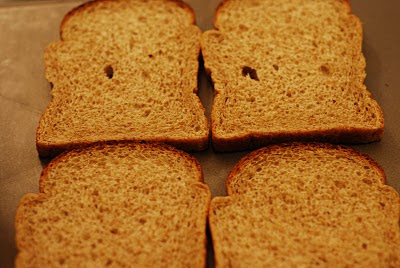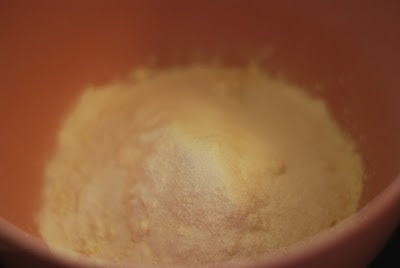The Economist and I are in Ireland enjoying a little holiday on our way back to the US of A. Yes, we’re moving back permanently. We’re excited, but we’re also excited about Ireland.
Now, just because the Irish tiger is taking a cat nap does not mean the Irish food revolution is dead. It is alive and well, if the meals I have eaten here reflect the whole. This has largely been attributed to this woman:

I have written about Darina Allen before. She is very inspiring but can be intimidating. She runs a guesthouse and cooking school in County Cork and also... a restaurant! The Economist and I had our anniversary dinner there this year. It happened to fall on a Sunday, which is the one day a week that dinner is served as an all-you-can-eat buffet. However, this is not some greasy, rank Old Country Buffet-type affair—this was beautiful, delicious and very high class!
More on that later.
The night previous, we rolled into Cork City quite late and ended up eating dinner in the same restaurant where we once celebrated an anniversary (or was it a birthday?) when we lived in Ireland 6 years ago. The only thing I remember about that meal was the dessert—a gorgeous caramel and pear hot pudding served with vanilla ice cream—and the setting. It’s a gorgeous restaurant with tables arranged under cavernous brickworks. I’d describe it as classy but bustling. And it was certainly bustling with activity, even late at night when we got there. We decided to bring one of our Paris wines over with us to Ireland and drank it with our meal. The Economist had a cream of mushroom soup, which I swear is the same recipe from the Ballymaloe cookbook because I make a similar one. Whatever, it was delicious, at least the spoonfuls I ate. Everything was served with delicious Irish brown bread and butter. Then I had a pan seared scallop salad with a lemon beurre blanc. I am loving the hot salads. Especially when they come with fresh local seafood. The Economist had some kind of local cheese, hot, over salad with roasted pumpkin seeds and something else... can’t remember what! For dessert, we split a delicious meringue nest with lemon curd and passion fruit pulp. So good, I can’t tell you.
Well, then, the next night we had this absolute feast at Ballymaloe House. We arrived a bit early and were invited to a parlor where everyone was waiting for dinner, sipping pre-dinner drinks. Then we were shown into the dining rooms, and given our choice of soup. The Economist had the Moroccan lentil soup and I had a chicken consommé. The chicken consommé was absolutely delicious—crystal clear and so bursting with chicken flavor. And inside were delicate little shavings of fresh vegetables—among which were carrots and zucchini. It was so good I didn’t even ask for a taste of the Economist’s lentil soup.
Once we had eaten our soup and more of that same delicious brown bread (how do they make it???) we were INVITED into the buffet room. We could choose between starting with a starter course or going straight to the main course primarily of large joints of roasted meats. We could come back for each course as much as we wanted. I think I ended up getting four salad plates of starters alone. This was not the kind of buffet where they try to fill you up with cheap carbs to begin with. In fact, there were very few carbs at all and I had to ask politely to be given more of that brown bread. They started the buffet table with good stuff and ended with more good stuff. There were mussels and clams on the shell with some sort of delicious sauce. There was local fresh smoked salmon. There was Swedish gravalax with a dill mayonnaise. There were whole raw oysters. I tried one for the first time, and while it was pleasantly briny, the supposed aphrodisiac quality and the thought of the associated... shall we say... anatomy... left me less than desirous for a second. This one guy took, like, only 8 or something. There was also a shelled mussel, on a little round of brown bread with a mustard sauce and then topped with some kind of yellow mousse and decorated with a tiny little flower. There were also four different types of pate. Ooooh, I have such a weakness for pate. I had two slices of chicken liver pate with bread and it was very, very good. I’m only listing the things I ate, there was so very much more. Everything there, by the way, is house made with produce they grow and even some animals they rear themselves. Other items come from trusted farmers in the local area.
After the starters, you’re supposed to move on to a salad course, and there are so many salads to choose from. I ate, among others, some tomato salad. I was curious how this tomato salad would taste because in the Ballymaloe cookbook, Darina gives her recipe and insists that when making a tomato salad, tomato slices MUST be spread out in a SINGLE layer. And on the whole, I have to agree. It certainly made for a tasty salad. There were also just dressed greens, which are always good. There was a fantastic potato salad, probably the best I’ve ever eaten, which means I shall be looking at the recipe in the cookbook whenever I next want to make potato salad.
After I had eaten several plates of these things, I decided to transition to main dishes, those large joints of roast meats. There was such a choice and I pretty much had a slice of each. I had roast pork with applesauce, the most delicious rare roast beef, roast lamb off the leg, roast goose, and a delicious ham with hot, hot mustard. The only things I didn’t eat were the roast beef tongue and the turkey. I save my turkey eating for November and December.
Matt had a special vegetarian main dish, which was a lot like the one the night before—a cheese soufflé on salad leaves with walnuts and grapes. He said he liked it.
Then, after all that, there was still dessert. We could choose any or all of the following: coffee meringue roulade, strawberry shortbread tart, poached gooseberries, chocolate ice cream and crème brulee, all served with extra whipped cream. These items were ceremoniously wheeled on a trolley to each table as they decided they were finished with the main course. The chocolate ice cream was presented in another Ballymaloe House innovation, an ice bowl, a bowl made of solid ice on which scoops of ice cream are mounded to keep them from melting in the dining rooms. I had a slice of the strawberry shortbread tart, some crème brulee and some gooseberries, just to try them. The gooseberries were like grapes only they tasted more plain, rather like apples. The strawberry tart was delicious as well, but the real star of the dessert trolley was the crème brulee. It was presented family style, made up in a huge dish, about three quarters of an inch deep, glazed with a delicious carapace of caramelized sugar and piped with whipped cream all around the edges. Each serving came rather homily scooped up and put on the plate, the shell sliding a bit over the oozing cream. It tasted simply like a dream.
Finally, there was tea or coffee. By then we had been eating for almost three hours! The soup seemed a long, long time ago. It wasn’t gluttonous, manic, shovel-into-mouth eating, it was just a really genteel and civilized procession of courses, one following the other. Halfway through the tea though I simply had to give up, I could not eat one more bite nor drink one more sip.
It’s funny—it sounds like it was a really formal and rigid meal in a stuffy setting, but it was really so casually elegant. The servers were just guiding us through the whole process, we could eat as much as we wanted of everything, going up whenever we were ready, and if something was running short, they’d bring it over to your table for you. The tables were set with nice clean linens, simple glassware and—GASP!—real silver cutlery, which I LOVE. There is nothing quite like eating with real silver. It was a dream.
What an amazing meal! And who would have thought Ireland would be the location of some of the best food I’ve ever eaten?




















































